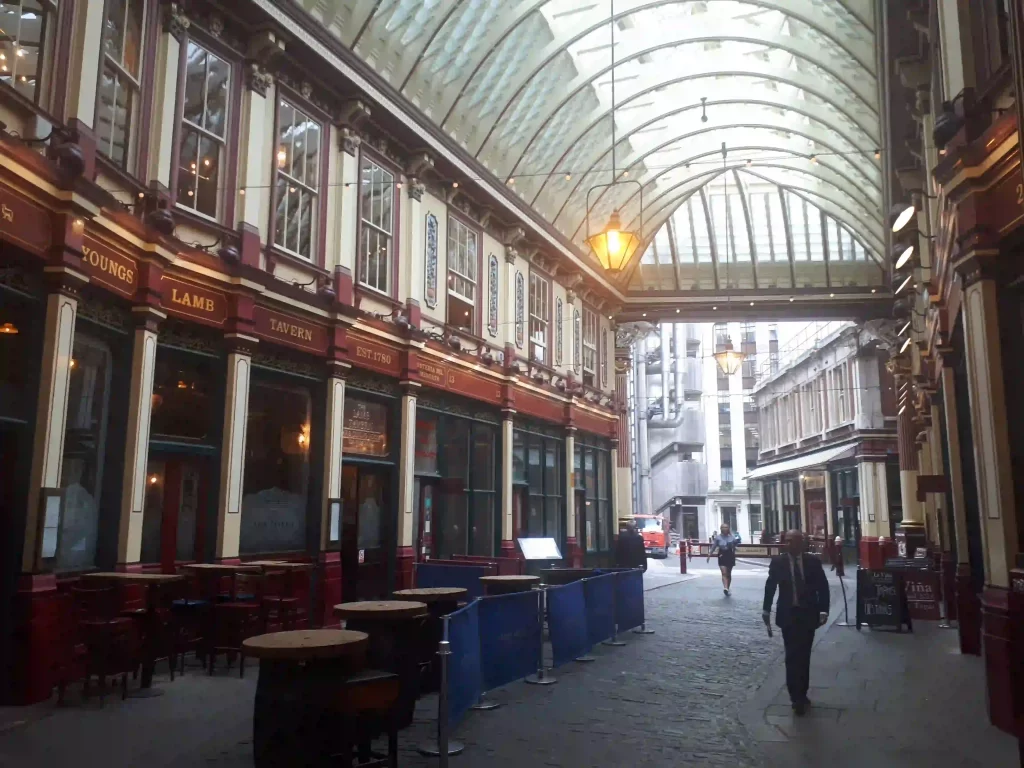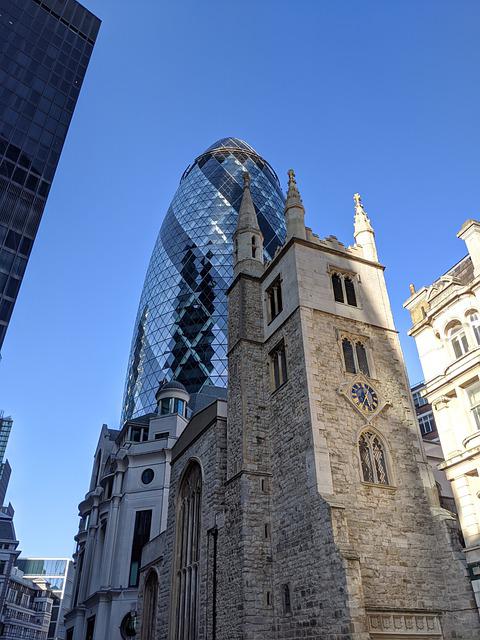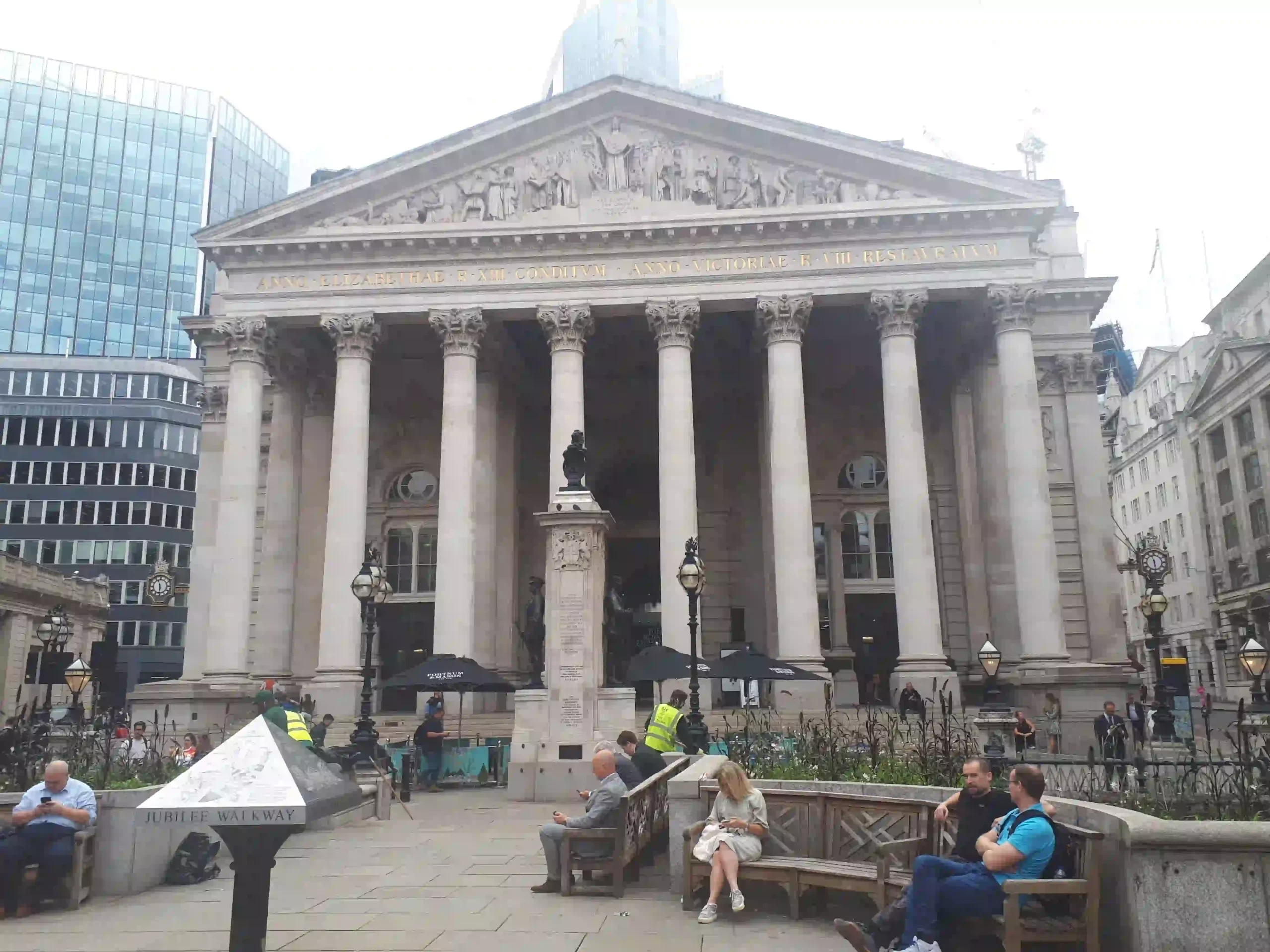Table of Contents
Some links on posts are affiliate links and will earn us a commission from qualifying purchases
If you live in London, or fancy a trip to the capital, why not try this short walk around The Square Mile in the heart of the city.
From 1991 to 2000, I worked in the area around St Paul’s Cathedral. Whilst I spent most lunchtimes sitting in the gardens of St Paul’s, I did occasionally go for a walk exploring the local area. I remember walking past The Royal Exchange and Bank of England, but took no real notice of my surroundings (other than a rough idea of how to get back to the office within an hour).
This walk explores the area from The Royal Exchange and eastwards, taking in some of the newer buildings that have become landmarks, as well as some of the history of the Square Mile.
The Square Mile walk
Start at Bank Station, look towards The Royal Exchange. Before heading off turn round to see Mansion House, home of the Mayor of London, and to your left, the Bank of England.
The Royal Exchange was established in 1566 by wealthy merchant Sir Thomas Gresham as the first purpose-built building for trading stocks, and was officially opened 5 years later by Queen Elizabeth I. In 1660 Gresham added two floors on top, basically creating Britain’s first shopping mall. Just 6 years later the Great Fire of London destroys The Royal Exchange.
Edward Jerman builds a new building and the market thrives until 1838 when this too was burned down. The current building was built in 1844 by Sir William Tite after winning a competition – he followed the original Gresham design but added the striking columns that mark the entrance.
Trading continued till the Second World War, since when it has been used as a temporary theatre (The Mermaid Theatre) in the 1950s and home to the LIFFE (London International Financial Futures Exchange) in the 1980s, before being turned into luxury shopping and dining in 2001.
As you walk through The Royal Exchange, as well as the high end shops, look out for statues of George Peabody (founder of Peabody Homes, accommodation for low paid workers), Paul Julius Reuter (news pioneer) and Thomas Gresham (founder of The Royal Exchange). If you are walking at night or early morning when it’s closed then walk up Cornhill to the right.
Film aficionados will want to keep their eyes peeled for a drinking water fountain and blue police telephone from the end scene of the original Bridget Jones Diary film where she catches up with Colin Firth in the snow.
Cross over Broken Lane and stay on Cornhill, until you reach St Michael’s Church on the right. St Michael’s Alley leads to the setting for Charles Dicken’s A Christmas Carol – the bell that chimed with the arrival of each ghost that awakened Ebenezer Scrooge was the bell of St Michael’s.
As you walk down St Michael’s Alley, you will spot the Jamaica Wine House with the blue plaque of Pasqua Rosee, owner of London’s first coffee house. Within 10 years there were 200 such establishments, where educated men went to discuss matters of the day and do business. You will see The George and Vulture on the opposite side, just a little further down the alley. This was the tavern that Mr Pickwick took refuge in Dickens’ The Pickwick Papers.
Carry on down to Lombard Street, turn left, then left again into Gracechurch Street. As you walk up you will come to The Crosse Keys, a spacious JD Wetherspoons pub, but formerly the Hong Kong and Shanghai Bank.

Cross the road and head into Leadenhall Market – a Roman basilica where Essex traders used to sell chickens and dairy products. If you have time explore the shops and alleyways, where you may spot Diagon Alley, where Harry Potter bought his wand. Before you reach the end you’ll see Lloyds of London, home of marine insurance, but with all the lifts, staircases and service rooms on the outside of the building this Richard Rogers building built in 1988 looks a little strange.

Turn left into Lime Street, cross Leadenhall Street, and turn left into St Mary Axe – on the left as you walk down you’ll see The Cheesegrater (The Leadenhall Building), coming to The Gherkin (30 St Mary Axe) on your right soon after. The Gherkin was designed by architect Ken Shuttleworth and opened in 2004.
Opposite The Gherkin turn left into Undershaft, then bear right past St Helen’s Church onto Great St Helen’s, and cross over into Bishopsgate. Cross into the alley opposite, down some steps and you will find yourself under Tower 42 – formerly the Nat West Building.
Turn left into Old Broad Street, passing the City of London Club, host to weddings, functions and conferences. As you reach Tesco Express on the corner, cross over and head down Throgmorton Street and past Drapers Hall. This was set up 6 centuries ago to trade woollen products, although now a grant-giving body, supporting education, older people’s care, and prisoner rehabilitation, is home here.
At the junction turn left down Bartholomew Lane – here you will pass the back of the Bank of England, and pass the entrance to it’s museum. This free museum is well worth a look to learn about the history of money and the bank. Turn right into Threadneedle Street to return to the start point at Bank Station, but look out for the statue of Duke of Wellington on his horse, Copenhagen.
Resource
This walk was taken from the Ordnance Survey London City Walks guidebook.

Recent Posts
The summer of 2025 is turning into a great summer, with some really hot days. Which is lovely if you are sitting by a pool or on the beach, but what happens if you are out putting in the miles...
Walking in woods and forests can be magical, and has such a great calming influence on your welfare.


